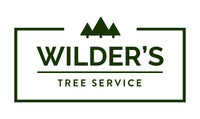Proper tree care is essential for the health, aesthetics, and longevity of your trees. Among the various tree maintenance practices, pruning is often recommended to maintain tree health and enhance their appearance.
However, it is crucial to understand the difference between pruning and tree topping to ensure that you're employing the right techniques for your trees. In this blog post, we explain the distinction between pruning and tree topping, emphasizing the importance of proper tree care.
- Pruning: Pruning is the selective removal of specific branches to achieve desired outcomes, such as improving tree structure, promoting healthy growth, and enhancing aesthetics. Proper pruning techniques involve:
- Removing dead, diseased, or damaged branches: This improves the overall health of the tree and prevents the spread of diseases.
- Thinning out branches: This helps improve air circulation and reduces the weight of the tree, decreasing the risk of branch failure during storms.
- Shaping and directing growth: Pruning can guide the tree's growth pattern, maintaining an appropriate size and form for the desired location.
- Removing crossing or rubbing branches: This prevents branch damage and potential entry points for pests and diseases.
- Promoting flowering or fruiting: Pruning can stimulate flower and fruit production, enhancing the tree's ornamental or productive value.
- Tree Topping: Tree topping, on the other hand, is a harmful and outdated practice that involves indiscriminate cutting of large branches or the entire crown of the tree. It often results in stubs and weak regrowth, leading to numerous issues:
- Increased risk of disease and decay: The large, exposed wounds from topping provide entry points for pests and pathogens, compromising the tree's health.
- Weakened structure: Topping removes a significant portion of the tree's crown, disrupting the natural balance between the roots and the foliage. This can result in weak, poorly attached regrowth that is more susceptible to breakage.
- Aesthetically unpleasing results: Topped trees often exhibit unnatural and unsightly regrowth, diminishing their visual appeal and potentially reducing property value.
- Reduced lifespan: Topping weakens the tree's overall health and vigor, making it more susceptible to decline and premature death.
Understanding the difference between pruning and tree topping is crucial for maintaining the health and integrity of your trees. While pruning promotes healthy growth, structure, and aesthetics, tree topping is a harmful practice that can lead to long-term damage and tree decline. As responsible tree owners, it is essential to prioritize proper pruning techniques and engage the services of professional arborists when necessary.
Wilder's Tree Service emphasizes the significance of employing skilled arborists who follow industry best practices to ensure the well-being and longevity of your trees. Remember, proper pruning contributes to the overall health and beauty of your trees, while avoiding harmful practices like tree topping preserves their long-term vitality.

